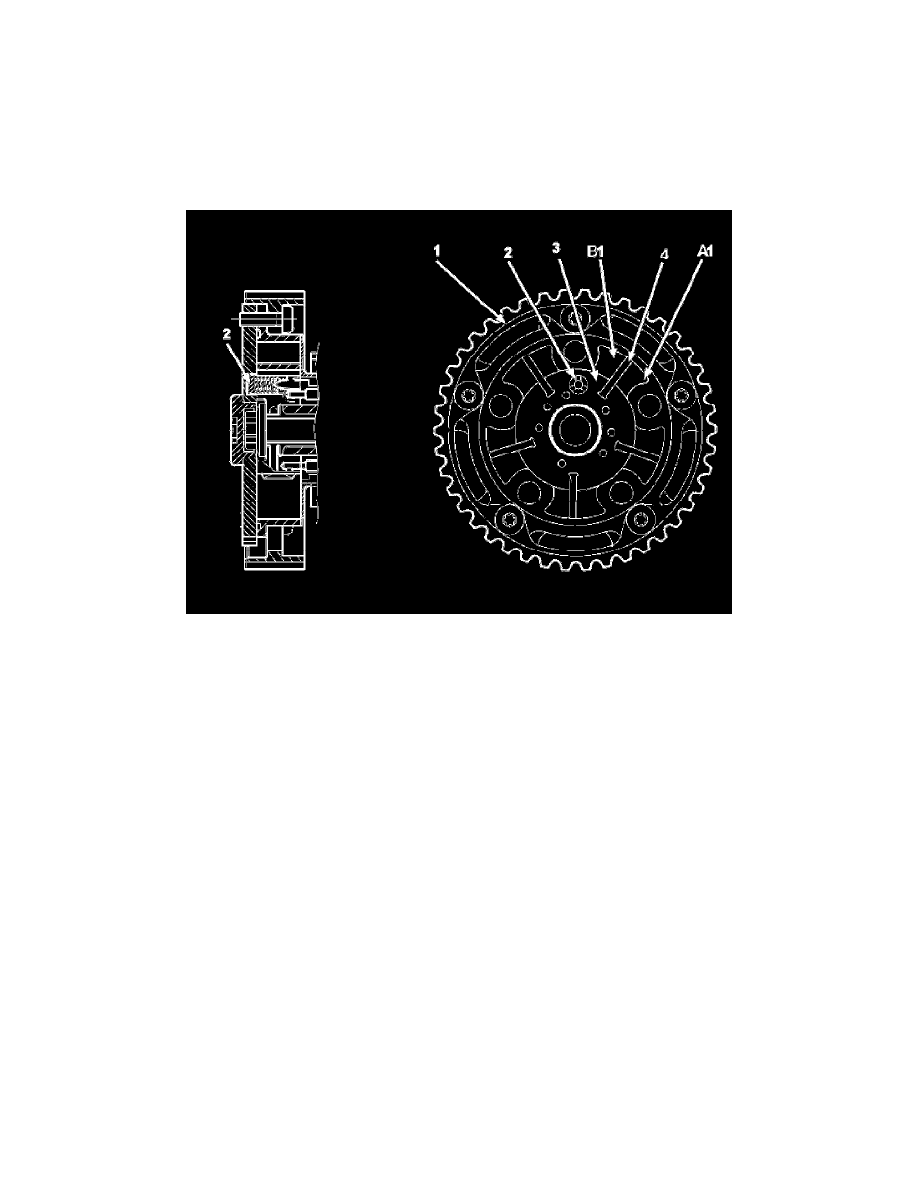V50 T5 L5-2.5L Turbo VIN 68 B5254T3 (2006)

The following applies when the camshaft is fully deployed:
-
the opening angle of the intake valve is -(minus) 23 degree CA
-
the closing angle of the intake valve is -(minus) 3.5 degree CA.
The total of the closing angle of the intake valve -(minus) the opening of the exhaust valve = the valve overlap.
Control, CVVT Unit
Control, CVVT Unit
HINT: The illustration is a view of the CVVT unit from the side and from the rear.
1: Timing belt pulley
2: Lock pin with spring
3: Rotor
4: Rotor wings
A1: Chamber A
B1: Chamber B
The function of the CVVT unit allows the position of the camshaft to be adjusted in relation to the crankshaft.
The camshaft is secured to the rotor (3). The rotor (and with it the camshaft) rotates in relation to the timing belt pulley (1) within set angles.
When the camshaft is in its 0 position, the timing belt pulley and the rotor are locked together by the lock pin (2). A spring-loaded lock pin slides into a
hole on the inside of the end of the timing belt pulley to secure it.
Camshaft Reset Valve (Continuous Variable Valve Timing (CVVT))
Camshaft Reset Valve (Continuous Variable Valve Timing (CVVT))
